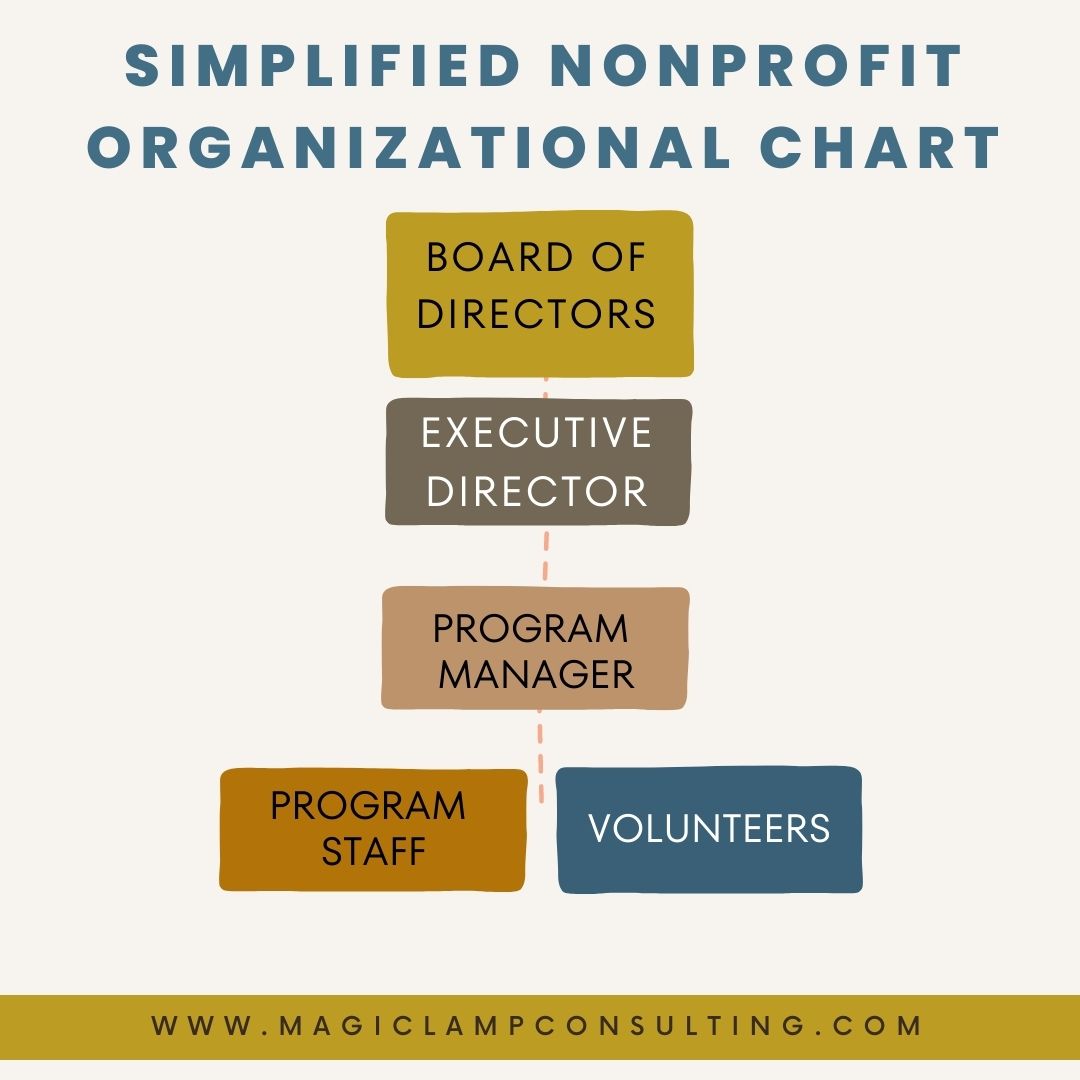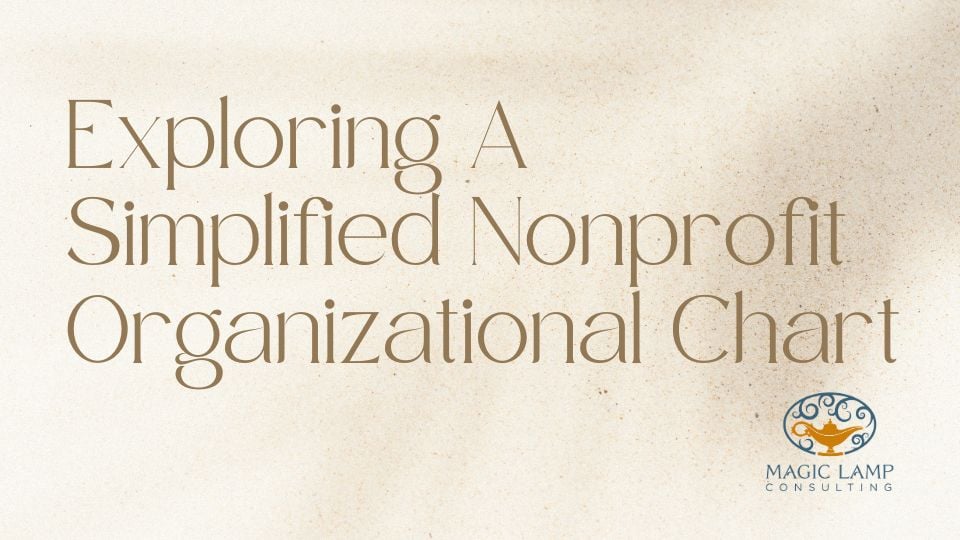As a nonprofit leader, you are driven by a passion for your cause and a commitment to making a...
Exploring a Simplified Nonprofit Organizational Chart

A nonprofit hierarchical organizational chart is a visual representation of how the organization is structured and organized. This is a benefit both internally and externally.
Internal Benefits:
Including a nonprofit organization chart with a grant application can help provide grantors with a better understanding of the nonprofit and its capacity to use the grant funds effectively to achieve its mission.
Have questions about how you should be structuring your nonprofit? Book a strategy session! We would love to learn more about your organization.
Internal Benefits:
- Strategic planning: An organization chart helps in strategic planning by identifying key positions and roles critical to the success of the organization. Allowing the nonprofit plan for growth and sustainability.
- Resource allocation: It can help in allocating resources effectively by identifying which departments or roles are critical to the success of the organization.
- Efficient communication: A hierarchical chart also allows for efficient communication between employees and managers. It ensures that communication flows smoothly and that all employees know who their superiors are and who they can turn to for guidance.
- Clarity of roles and responsibilities: A well-defined hierarchical chart ensures that everyone in the organization knows their roles and responsibilities. This clarity can help reduce confusion and prevent overlap or gaps in tasks.
- Performance Management: It provides a clear structure for accountability and feedback, which can help improve overall performance.
Including a nonprofit organization chart with a grant application can help provide grantors with a better understanding of the nonprofit and its capacity to use the grant funds effectively to achieve its mission.
- Demonstrate capacity: An organization chart can demonstrate to grantors the nonprofit has a clear and structured approach to achieving its mission. It shows the nonprofit has the capacity to manage its resources, personnel, and operations in an efficient and effective way.
- Transparency and accountability: By sharing an organization chart, the nonprofit is showing its commitment to transparency and accountability. It shows that the organization is open and willing to share information about its structure and operations with its stakeholders.
- Clarity of purpose: It can help to clarify the purpose of different departments or roles within the organization, helping the grantor understand how the nonprofit is working to achieve its mission and goals.
- Capacity for collaboration: An organization chart can also demonstrate the nonprofit's capacity for collaboration and teamwork. It can show how different departments or roles within the organization work together to achieve shared objectives.
Have questions about how you should be structuring your nonprofit? Book a strategy session! We would love to learn more about your organization.





